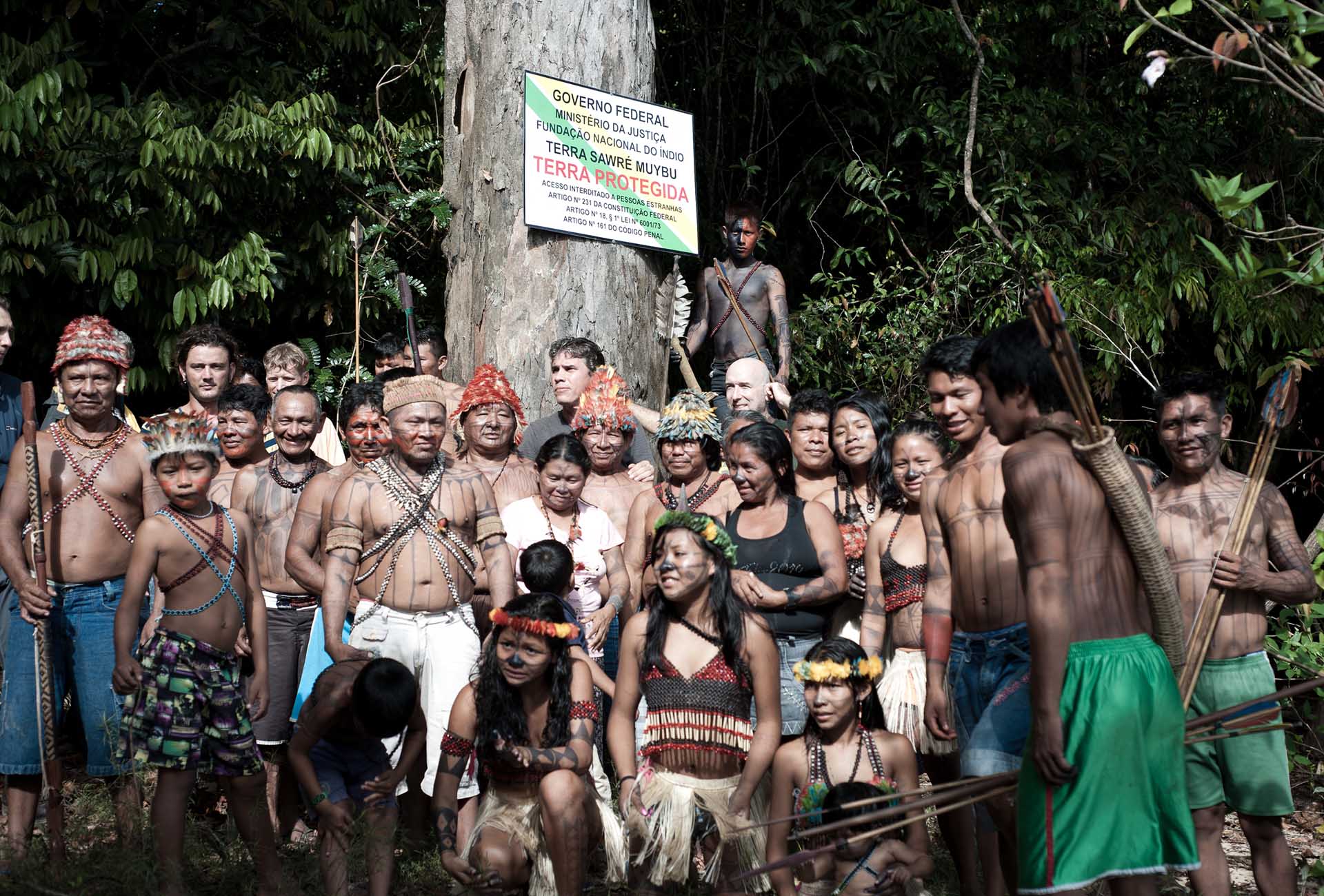Greenpeace has joined forces with an Indigenous Amazonian community in an unofficial demarcation of their land, deep in the heart of the Brazilian Amazon.

Munduruku people pose near a tree with a demarcation sign.
The demarcation is the latest effort in a global campaign to protect the Tapajós River from the construction of a massive dam, the São Luiz do Tapajós (SLT), which would lead to devastating rainforest destruction.
The Munduruku Indigenous Peoples, who have been fighting against the dam and for the formal recognition of their land for many years, have sparked a global movement for the protection of the Tapajós and are calling on global companies to distance themselves from the controversial project.
In July, a group of New Zealanders will arrive at Sawré Muybu Indigenous village to assist the Munduruku.
Greenpeace NZ’s Annette Cotter is one of the team currently working to save the Tapajós River.
She says it’s important that New Zealanders follow the story of the fight.
“The Amazon might seem far away, but saving the rainforest is critical for us all. Not only does the Amazon help regulate global weather patterns but it’s protection is essential if we are to limit dangerous climate change,” she says.
“The Munduruku are asking for global help to protect their land from this huge threat – help that we can all give, no matter where we live.”
This morning, a global petition was launched to “save the heart of the Amazon”. Signatures will form a virtual human chain around the Munduruku territory in an effort to pressure the Brazilian Government to protect it.
Juarez, the chief (cacique) of Munduruku Sawré Muybu Indigenous land, says the movement has relevance across the globe.
“This an important battle not just for the Munduruku people, but for everyone around the world since we are talking about one of the biggest forests that still exist in the planet,” he says.
On the ground, the land demarcation involves marking the land with fifty signs, similar to those used by the Brazilian government, to indicate the territory is Munduruku land.
The demarcation process would normally be executed by the Brazilian Government as the next step in a formal Indigenous Land recognition process.
Placing the signs is just one of a range of activities planned at the Sawré Muybu Indigenous village – another will include installing solar panels in the community.
If approved, the SLT dam would be the first of five planned in the Tapajós River. It would have a reservoir of 729 square kilometers (almost the size of New York City), which would flood part of the Munduruku land, and it would drive an estimated 2,200 km2 of indirect deforestation as a result of roads and other infrastructure related to the construction and migration to the area.
Greenpeace is calling on international companies like Siemens to confirm they will not get involved in the project by supplying components like the generators. Although their company profile is focused on green solutions, Siemens were involved in the controversial Belo Monte dam, the most recent destructive dam to be built in the Amazon.
